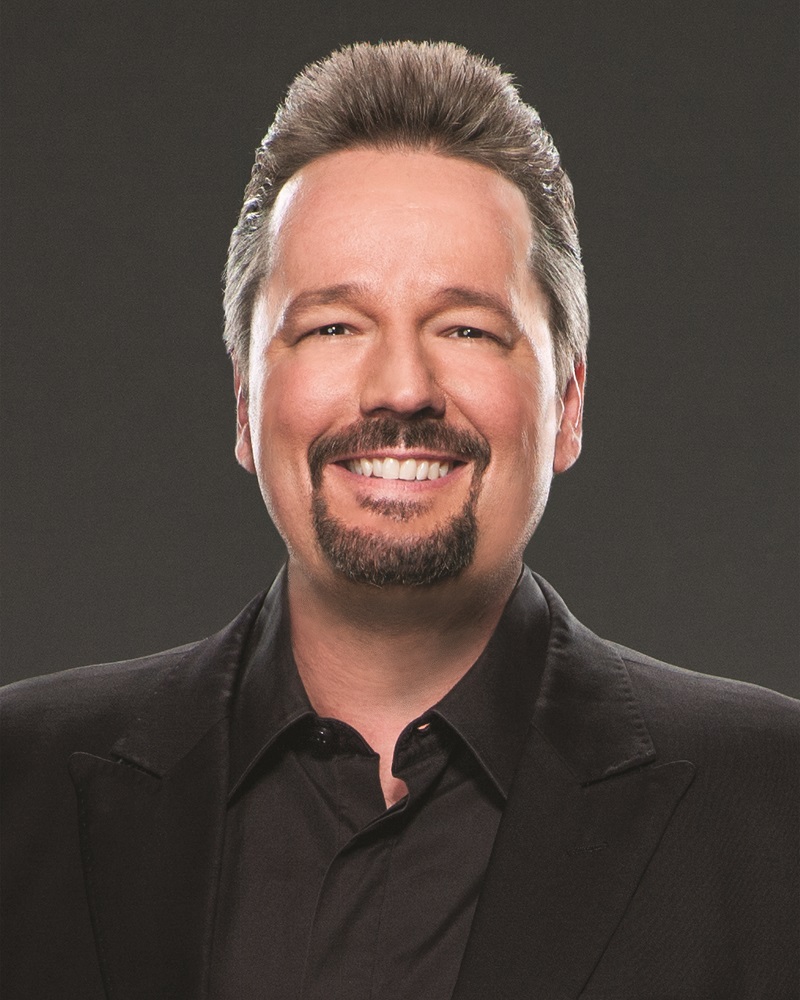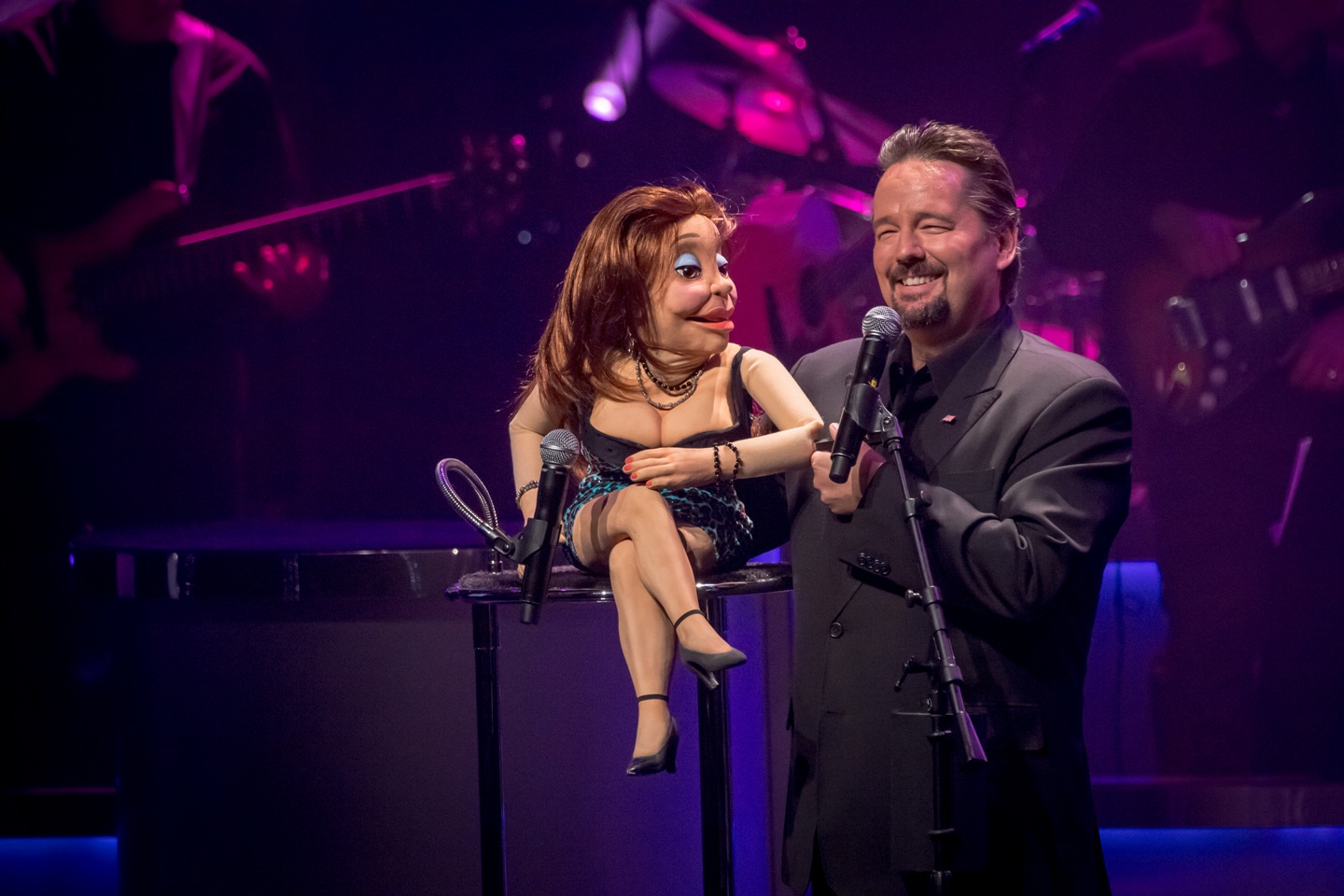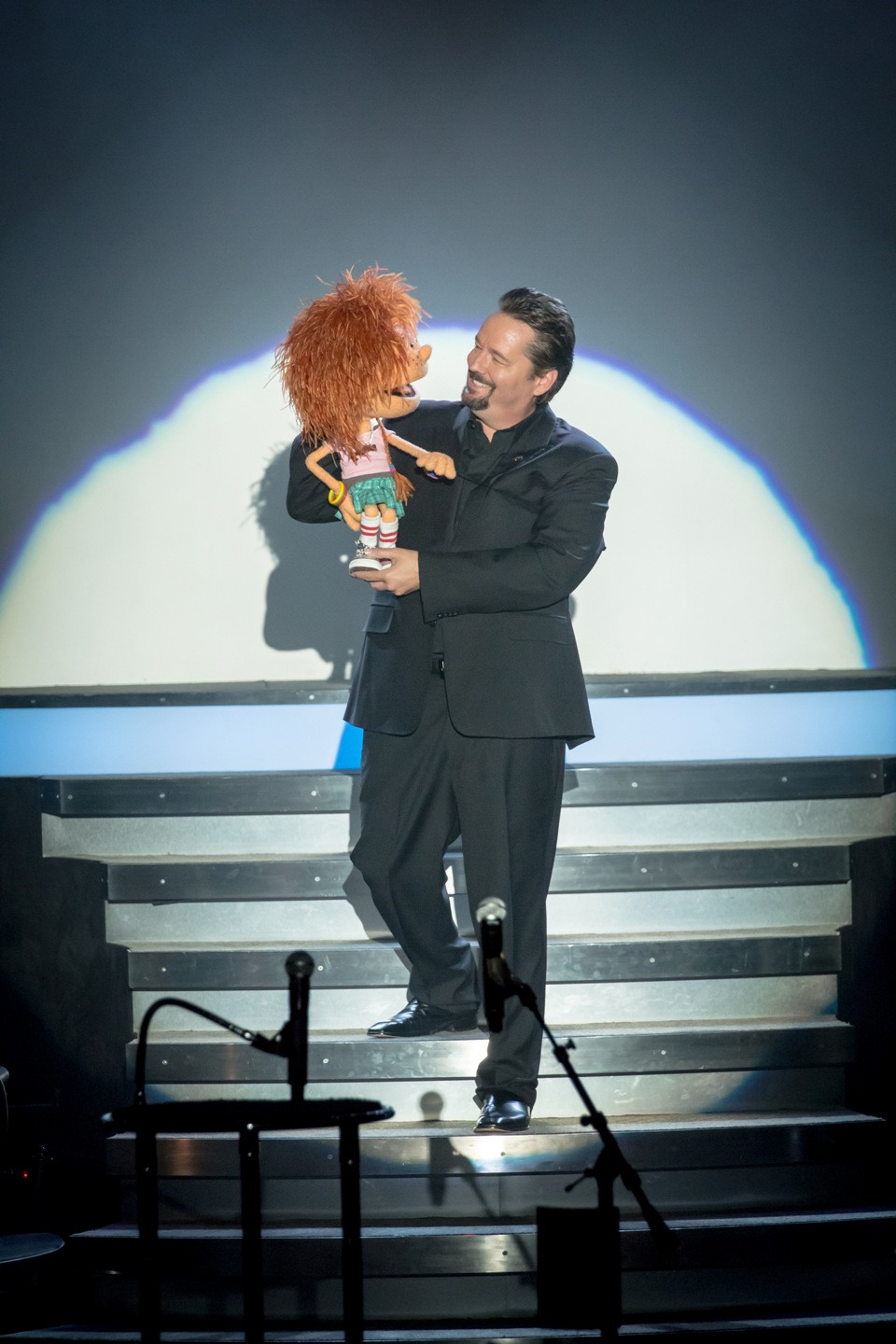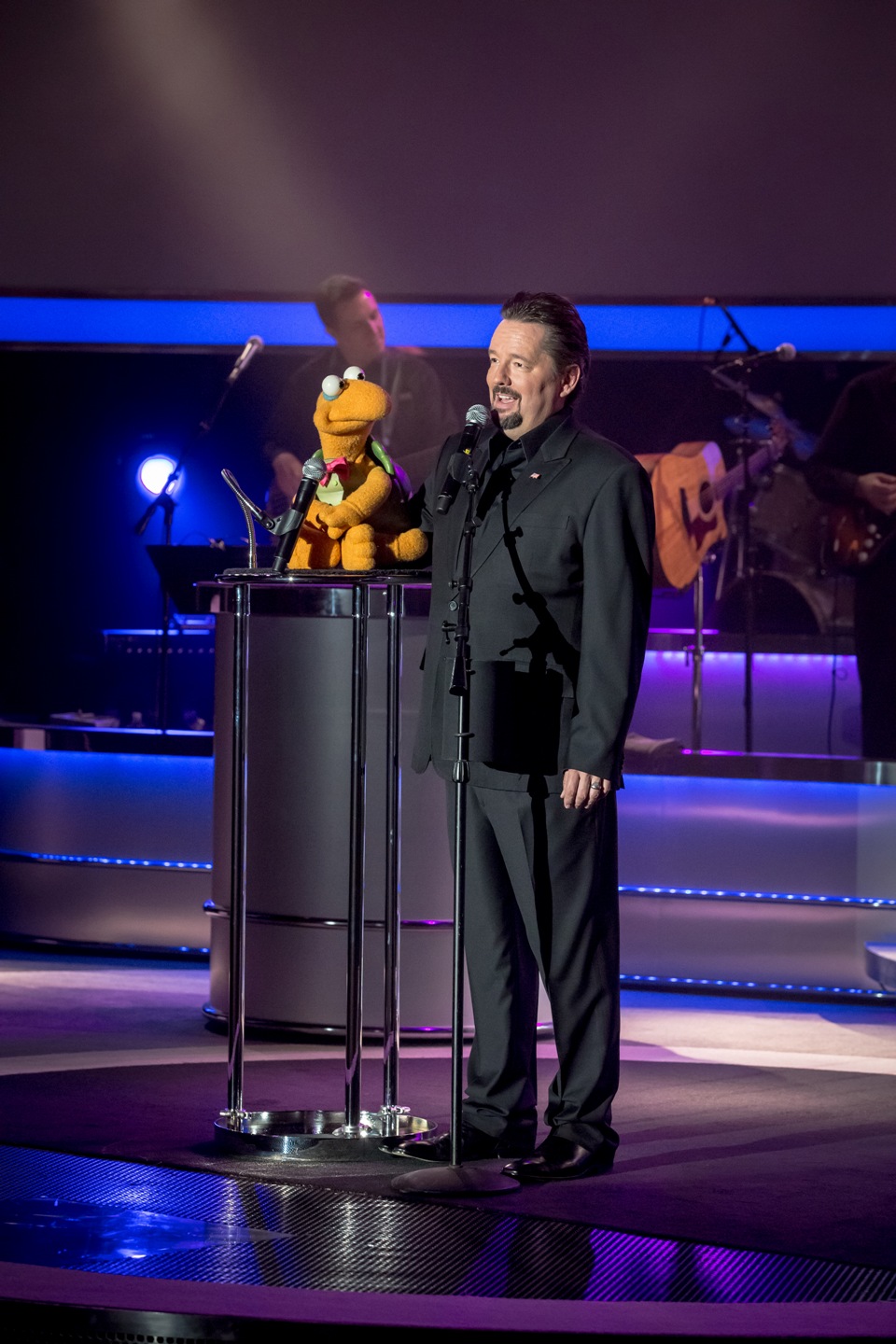“One
thing I have learned is to keep pursuing your dreams. Honestly,
they never really die unless the dreamer stops chasing them and
lets them.”

I
was standing on stage during a media event with celebrated entertainer
Terry Fator when he was asked something about what he had learned
by winning America’s Got Talent, which for him came a
few years after he reached that magical milestone birthday most
fear – forty. And that response you see quoted above struck me
like a lightning bolt.
Harry
Chapin wrote and sang several fantastic, interesting songs. I
want to mention two of them here.
The
first is called “Circle”… which he used to close all of his shows.
“All
my life’s a circle
But I can’t tell you why
The seasons spinning round again
The years keep rollin’ by”
I
mention this song, because I have absolutely zero doubt that Terry
Fator had no clue at all about the connection… the circle… his
comment had created with me.
At
the time I met Terry, I was also preparing the final draft of
my first book, Time
Just Drifts Away. My wife is a huge Harry Chapin
fan, and she has turned me into a very big fan of his music as
well. When we got married fifteen years ago, I took one of his
songs — “Dreams Go By” — and used it as a springboard to write
my lovely bride a poem. (This would be the second song I plan
to mention.)
I
presented the poem to her on our wedding day. You could say that
Chapin and his music are kind of special in our home. And so,
when I was looking for options as a name for the first book, I
went back to this song…
“I
don’t know when
But we will dream again
And we’ll be happy then
Till our time, just drifts away”
Now…
let’s take a look at what Terry said…
“One
thing I have learned is to keep pursuing your dreams. Honestly,
they never really die unless the dreamer stops chasing them
and lets them.”
And
then let me expand on “Dreams Go By” from Harry…
“And
so you and I
We watched our years go by
We watched our sweet dreams fly
Far away, but maybe someday
I don’t know when
But we will dream again
And we’ll be happy then
Till our time, just drifts away”
And
there you go… I was standing on a stage, more or less thunderstruck
by my recognition of a circle, as Terry spoke of chasing dreams.
Forgive me for seeing some interesting — though lacking a bestseller
of my own, as yet unfulfilled — parallels.
Let’s
shift the focus of this introduction back to an appropriate place…
Terry Fator.
~ ~
~ ~ ~

Terry
Fator never expected to win America’s Got Talent. In
fact, if you asked him when he thought he had a chance of winning,
his likely answer would be about three words long… “After I won.”
That’s
just a guess on my part, but he did enter the competition hoping
to boost his career options. He never thought he would make it
to the finals. Having turned forty, Terry was finding his entertainment
options were beginning to close. Not disappear… but they were
not as filled with energy, hope and endless possibility as they
had been when he was younger.
He
was still dreaming though, so to speak. The target wasn’t winning
America’s Got Talent. It was about opening new doors
and creating fresh opportunities. It’s was about recharging his
spirit. It was about facing his future and realizing those dreams.
Funny
thing about opportunity. When there’s a knock on the door, some
people answer and some people don’t. A few of those that do answer
find themselves prepared to take advantage of it in ways they
never expected. And once Terry qualified for the America’s
Got Talent competition, his hard work and efforts over more
than three decades of performances placed him in a comfort zone
with a sense of preparedness few can understand. And it is that
thought that sends us to Texas… almost forty years ago… where
our story begins and a young boy was in a library…
Paul
Winchell was an incredibly talented and special man. One of his
most notable accomplishments was designing and earning a patent
for an artificial heart. He was also a professional entertainer.
Most of us will hear his voice with ease when it is noted that
he was the original voice of Disney’s Tigger. He was also an accomplished
ventriloquist. Two of his characters, Jerry Mahoney and Knucklehead
Smiff, reside in the collection of the Smithsonian Institution.
Winchell
wrote a book called Ventriloquism for Fun and Profit.
Terry found it while working on a project in the library, and
quickly added ventriloquism efforts to his expanding entertainment
endeavors. This took place around his tenth birthday.
Terry
was known to family and friends for his spot-on impersonations,
earned a shot at his first paying performance by the age of 12,
and dazzled onlookers when he sang cover songs… not just by performing
the songs, but by sounding exactly like the original lead vocalists.
(Performing
for thoroughly entertained audiences… working hard at his ventriloquism
skills… known for his celebrity impersonations… you should be
seeing the foundation of similarities to a triumphant run on a
television talent show. Remember… he was 12. We’re still more
than thirty years away from his America’s Got Talent
audition and we are seeing the development in so many areas of
an all-around, tremendously versatile performer.)
He
was also occasionally intertwining his singing performances with
his dolls. In order to complete his “Rock With You” cover of Michael
Jackson, Terry brought along a lion puppet he named Jackyl Mikeson.
He sang while helping out with his family’s cleaning business.
And he would sing along as the radio delivered songs in the car…
mimicking all the singing voices, while practicing not moving
his lips as he did.
In
many ways, if it’s possible to define it this way, Terry’s biggest
problem was being too talented to fit into any particular entertainment
area.
He
was the lead vocalist for a band, and thrilled those listening
with his remarkable singing voice – especially when delivering
virtually pitch-perfect renditions of the original. That band
was on the verge of landing a recording contract. One of the problems?
The band’s following, and Terry’s passion, was developed in no
small part around entertaining the audience with quality music
and impersonations of the stars. As Terry’s brother, Jep, offered:
“Recording companies viewed that as a novelty. It’s nice, and
great for the audience. But it wears thin quickly when you’re
trying to plan a recording career, especially if you hope to record
original material.”
As
a solo performer, Terry was finding consistent work at state fairs
and even through corporate events. Unfortunately, the ventriloquist
seldom gets a spot in prime time on the main stage. He found himself
fighting the heat of mid-day performances during the Texas summers.
And one time, he had his show moved due to the weather and took
the stage to find an audience of one person waiting for him.
One
day, he decided to overhaul his performances. Having found a terrific
reaction to a routine where he had one of his dummies singing
the Garth Brooks classic “Friends in Low Places,” he started combining
his ventriloquist abilities and impersonation skills to occupy
an even greater percentage of his shows. In short, most of his
show became the dummies impersonating the stars. United with his
well-polished comedic sense and overall professionalism, he felt
like he was getting stronger responses from audiences than ever.
That
brings us to a little girl named Emma Taylor and an audition for
the second season of a show called America’s Got Talent.
Terry
had hoped simply to get an audition that put him on television.
Sure, he wanted to advance in the competition. And — dare to dream
— until he was eliminated there was always a small chance of winning.
All he hoped for though was a shot that could lead to more things
down the road. America’s Got Talent was the opportunity…
he was at the door… and little Emma was about to break that door
down.
“When
I auditioned for America’s Got Talent, I was brought
into this room with some of the production crew. You don’t immediately
go on the big stage and audition for the three judges. There are
some phases before that. So there I am with Emma, standing maybe
ten feet or so away from the group, and I do ‘At Last.’ One of
the people at the table looked at me and said, ‘That’s very nice,
but you’re not allowed to use microphones and recordings.’ I told
him I wasn’t using a recording and that it was me singing. He
challenged me to prove it, and asked me to come right up to the
table and sing again.”
Several
weeks later, the nation watched Winston the Impersonating Turtle
offer his version of Roy Orbison’s “Crying” and Terry was closing
in on actually winning the competition. As Terry explained, “I
will forever be convinced that while all of the characters helped,
it was Winston that won America’s Got Talent.”
One
of the funny twists about America’s Got Talent, and really
for any of the competition shows, is the changes that take place
from week to week. When a dance group knocks the audience out
with a dynamic routine one week it’s fantastic. The downside is
that once they advance, they then have seven days to prepare a
follow-up. For a talented but unproven group of amateurs, that
can be a problem. For singers unaccustomed to controlling the
pitch of their voice or uncomfortable changing styles, a new theme
can be a problem. One week is not much time to overcome those
obstacles.
Years
of practice and hard work meant that problem wasn’t really presented
to Terry: “I had been singing and performing with bands for a
long time, and I had been doing my ventriloquism for a long time.
I had about three hours of material that I felt comfortable with
and really good about pretty much ready to go. In many cases it
was hard for me to decide what not to do.”
Have
you ever watched America’s Got Talent? Have you ever
heard them talk about not being certain if a performer can create
a full show out of their two-minute routine?
Once
he won America’s Got Talent, Terry brought his skills
to Las Vegas. His hard work, dedication and years of experience
have been rewarded with a passionate following of fans that now
flock to see him perform. He currently delivers his efforts for
about two hundred and forty shows a year in the Terry Fator Theatre
at The Mirage… a show that is one of the hottest tickets around,
based right on the main stretch of the world-famous Las Vegas
Strip.
~ ~
~ ~ ~

The
real first question I planned for you is one I keep wondering
about asking, and that is to find out how it feels to have a career
started thanks to Tigger.
(Laughs)
I guess that’s true. Isn’t it? Paul Winchell was the original
voice of Tigger.
When
I was about 10 or so, I found a book he had written on ventriloquism,
and everything kind of jumps from there.
It’s
funny, there aren’t many well-known ventriloquists, but the ones
people do know are very well regarded. I also believe you spent
a lot of time singing in bands and impersonating famous singing
voices. Were there many ventriloquists that influenced you as
you were growing up and learning your crafts?
Oh
sure, Winchell was a very well-known ventriloquist. Jerry Mahoney
was one of his characters. And I watched a lot of his work when
I could.
Edgar
Bergen and Charlie McCarthy of course. And I really enjoyed Willie
Tyler and Lester.
I
loved it.
Since
you perform regularly in Las Vegas, I’m wondering what is motivating
you to hit the road and how often you do.
Well,
first of all it’s a lot of fun just because it is something a
bit different. It’s wonderful to take the show, maybe shake some
things up a bit, and bring it out of Vegas.
The
unfortunate reality is that as fantastic as performing primarily
in Las Vegas is — and it really is very special — people tend
to forget you exist if you don’t get out once in a while. You
have to stay on their mind.
A
night like this lets me bring the show to audiences that might
not get to Vegas. Maybe along the way, I get some people interested
in traveling to Vegas to catch the show down the line, and just
in general make sure people know I’m still around.
How
many shows do we travel for? It’s maybe twelve to fifteen each
year. So, it’s not too many. But it’s certainly fun for me to
go to new places and meet people. And I love performing for them.
Do
you find yourself changing the show much?
I
try to shake it up when I can.
We
do two hundred and forty shows each year at The Mirage. And when
I travel, most people still recognize me more from America’s
Got Talent. That’s great, and I am incredibly grateful. The
thing is, doing more than two hundred shows annually in Vegas,
I need to work hard at creating a show that people consider a
destination for their trip this time and also work on making it
a destination for future visits.
There’s
always room for new puppets and new routines. I think that audiences
will be very happy with the show every time though, and they can
rest assured that their favorites will be joining me onstage.
So,
you’re very conscious of creating a connection with the audience.
Absolutely.
No doubt about that.
I
want them to come to the show and have a really good time. I want
them to feel thoroughly entertained. If that happens… if they
have a great evening at my show… and go home talking non-stop
about Winston or Walter or Emma, and not so much about me? That
is just fine with me.
I
like that you mentioned audiences can identify with your characters
more than you. Ventriloquism can be a funny art. When it works
really well – heck, Shari Lewis was able to make a connection
with her audiences using sock puppets. Lamb Chop being the most
famous example. Do you think there is a special knack for connecting
with an audience, and what happens when a puppet makes that connection?
For
me it has always been about basing things on people we all know.
Vikki
the cougar is almost direct from people I know in Los Angeles.
And Duggie developed from me wondering what happened to all those
druggies from high school while I was growing up, and thinking
about what they might be like as neighbors today.

Do
you have a favorite character?
(Takes
a deep breath) I do. Two actually.
The
first one is very personal for me. When I was a teenager, I had
really begun pursuing performing. Part of that was with a band,
and part was doing shows and ventriloquism. I was very serious
about it, so my mother began saving money and eventually had enough
for a professional ventriloquist’s doll. They cost about $1,500
back then – which is a lot today and it was even more back then.
And she bought me Walter T. Airdale.
And
the second is easy, Winston the Impersonating Turtle. I will forever
be convinced that while all of the characters helped, it was Winston
that won America’s Got Talent.
Winston
was a last-minute addition, wasn’t he?
He
was. I had this vision in my head for America’s Got Talent.
I thought it could be a really great segment, where I had Kermit
singing “What a wonderful world” with Louis Armstrong.
I
decided to call up the Muppets and ask about using Kermit in my
act. They said no. They wouldn’t allow me to bring Kermit onstage
and do his voice. I was stuck. And I really wanted to do this
number.
Eventually
Winston was born… a turtle impersonating a frog.
What
about new characters? I know you used to sing in a band and were
known for impersonating the famous original voices for some of
your cover songs. Do you find yourself thinking about some of
the favorites you sang back then, and wondering about how to design
a character so you can sing them now?
(Laughs)
Definitely.
It’s
hard to explain though. Because sometimes the character and the
song don’t look like an immediate match.
Like
Emma singing “At Last.”
Exactly.
When
I saw that on America’s Got Talent, I was stunned.
(Smiles)
Here’s a good story.
When
I auditioned for America’s Got Talent, I was brought
into this room with some of the production crew. You don’t immediately
go on the big stage and audition for the three judges. There are
some phases before that.
So,
there I am with Emma, standing maybe ten feet or so away from
the group, and we do “At Last.”
One
of the people at the table looked at me and said, “That’s very
nice, but you’re not allowed to use microphones and recordings.”
I
told him I wasn’t using a recording and that it was me singing.
He challenged me to prove it, and asked me to come right up to
the table and sign again.
I
did, and the next thing I knew I was heading to the stage for
the judges.
Your
goal with the show wasn’t to win, was it? I’ve heard you never
thought you could win and were hoping only to open a few doors?
True.
That was exactly my goal.
I
had no illusions of a ventriloquist getting America’s vote and
winning the show. I was hoping to get far enough along to earn
some exposure, perhaps make a few contacts, and maybe get some
people talking about me.
But
you also had an interesting thing in your favor… at least I think
you did. What I mean is that so often I’ll see performers come
out on the show, win a round and advance, and I can’t figure out
how they will ever learn a new routine in a week and perform it
at a level worthy of moving on again.
Sure.
I see what you mean, and it’s true.
I
had been singing and performing with bands for a long time, and
I had been doing my ventriloquism for a long time. So, I had about
three hours of material that I felt comfortable with and really
good about pretty much ready to go. In many cases, it was hard
for me to decide what not to do.
And
now, well, I know we have to consider an Oscar winner and many
other awards, but I think you arguably may be the most successful
winner ever from these talents shows. And well-deserved at that.
(Smiles)
Thank you for that. (He turns and looks at the seats in the theater.)
I certainly can’t complain about the places I’ve been since.
What
can we expect from you in the future?
I
hope a lot.
I
love performing in Las Vegas, and hope to be there for quite some
time. And, I’ll keep traveling when I can to do some other shows.
We
have plans to release another DVD at some point this year. And
there is some talk of something for television.
Since
we’re talking about keeping up with you, I want to mention that
I really enjoy your web site. It’s easy to navigate, very professional
looking, and has a ton of information. Should people be headed
over there for more details?
Thank
you. And sure — www.terryfator.com
— people will find news about all the upcoming events and specials
there as soon as it’s released.
~ ~
~ ~ ~
I
want to thank Terry Fator, for all of his time and consideration,
along with some of his representatives for their assistance in
assembling this piece and providing the images shown with it.
In
addition to meeting in person, this piece was developed through
e-mail exchanges and many contacts, and I simply cannot express
my gratitude in words for the assistance, patience and friendship
afforded me. It was an absolute pleasure meeting and working with
them on this project. (And I certainly hope to work with them
again.)
Of
special note… you need to check out Terry Fator. Buy a DVD… look
for him on television… and if you have plans to head to Las Vegas,
an evening at The Mirage in the Terry Fator Theatre should be
one of your must-do items for the trip.
Here
is the best place where you can learn more.
Terry
Fator’s official web site
The
pictures you see in this article have been provided by Terry
Fator and his representatives. All rights to these pictures
belong to Terry and his business entities, which have in turn
approved their use with this project on my site. They cannot
be used for any other purpose without the permission of Terry
Fator and/or his authorized representative.